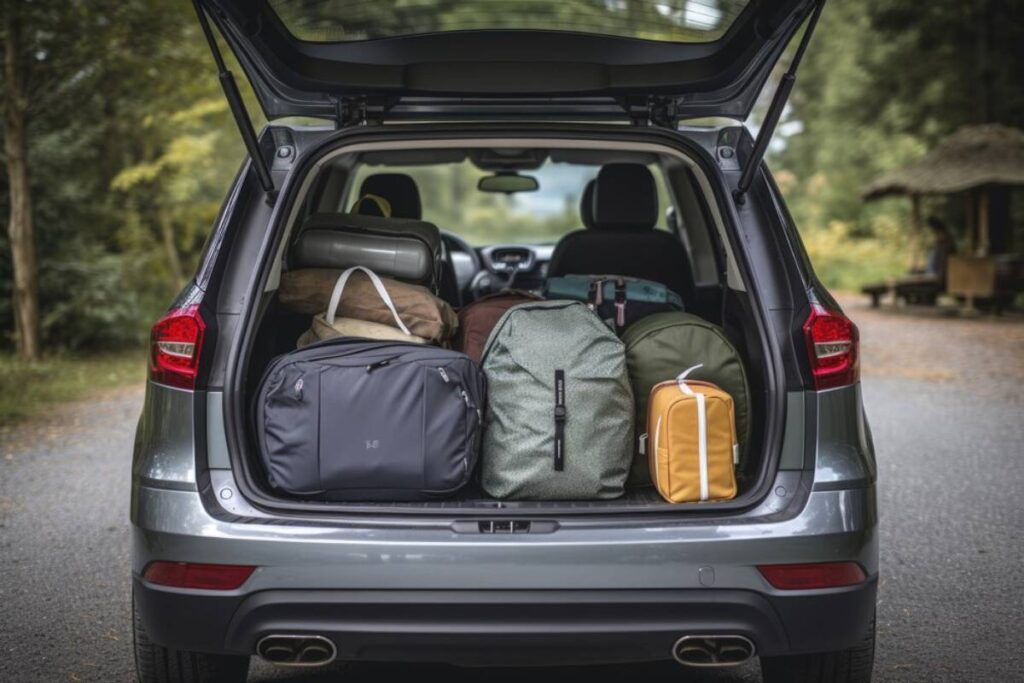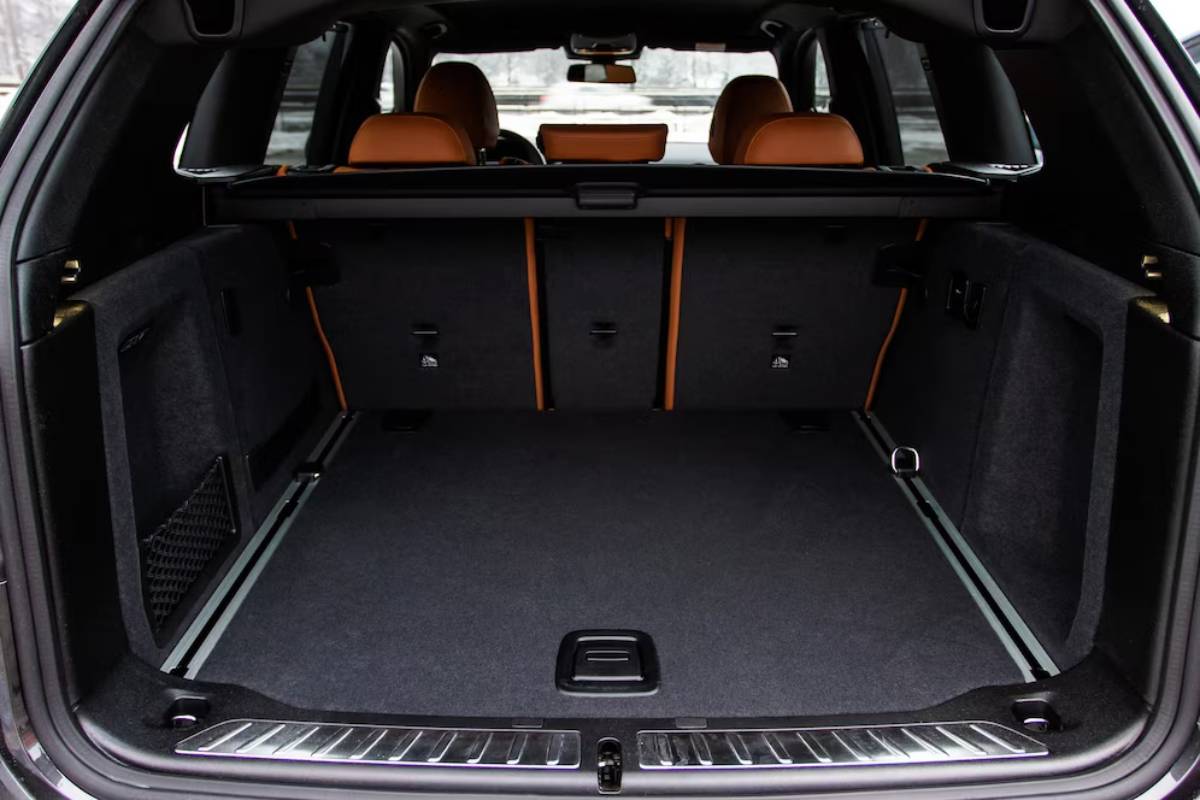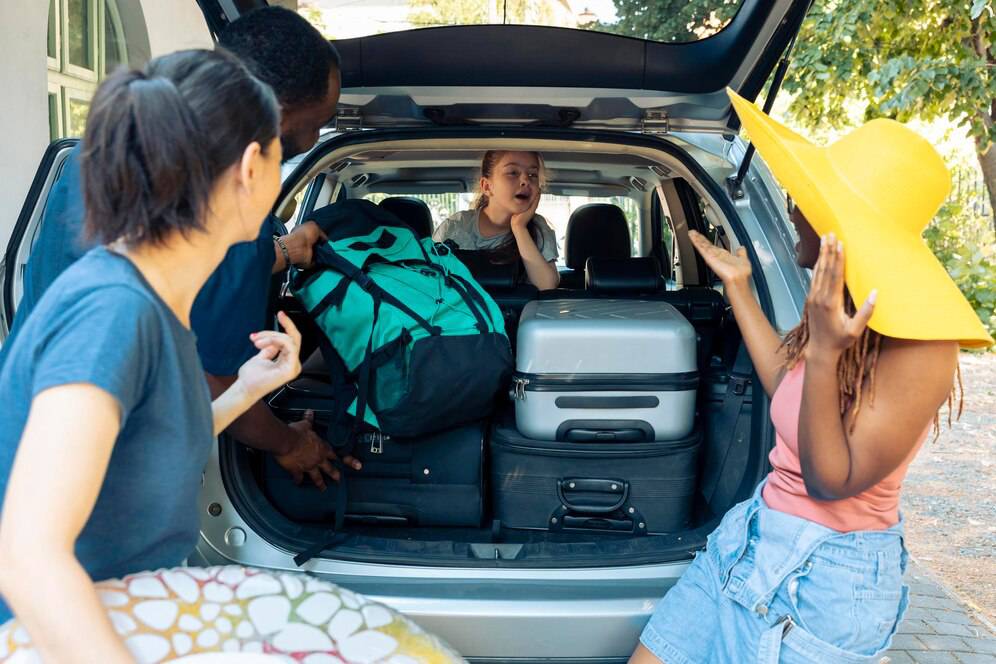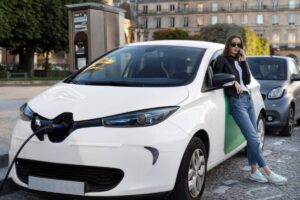The Automobiles & Vehicles Blog

Electric SUVs with the Most Cargo Space
When it comes to family trips, shopping sprees, sports gear, and those bulk-buy weekends at IKEA, one thing matters more than fancy screens or leather seats: space. And not just the kind where you can stretch your legs, but the kind that fits pushchairs, pets, paddleboards — and maybe even a few plants.
But if you’ve been looking into switching to an electric vehicle, you might be wondering: do electric SUVs actually offer enough cargo room?
The answer is yes — and in many cases, more than you’d expect. With smart battery placement and flat floors, many EV SUVs offer outstanding cargo capacity without sacrificing design or performance.
In this guide, we’ll break down the best options on the market today, comparing EV SUV space, ease of access, real-world practicality, and what you can expect behind the rear seats. Whether you’re a growing family, an outdoor enthusiast, or a business owner on the move, these are the electric SUVs with the most cargo space you should know about.
Why Cargo Space Matters in an EV SUV
It’s Not Just About Litres
When car manufacturers quote boot size in litres, it often doesn’t tell the full story. What really matters is:
- Boot height and depth
- Flat loading floors
- Second-row seat folding options
- Tailgate opening size and height
- Underfloor or front boot (frunk) storage
A wide, low opening with a flat load bay is much easier for large suitcases and heavy shopping than a tall, awkward space with uneven flooring.
EVs Offer a Design Advantage
Because electric vehicles don’t need large combustion engines or bulky gearboxes, designers have more freedom to maximise interior volume. Many EVs feature:
- Frunks (front trunks) for small bags or cables
- Flat rear floors for better load stacking
- Deep underfloor storage in the boot
So when we talk about “most cargo space,” we’re not just counting litres — we’re looking at overall loading practicality.
Top Electric SUVs Ranked by Cargo Capacity
Let’s take a look at the top-performing models on the market today. All figures reflect boot space behind the second row of seats unless stated otherwise.
1. Tesla Model X
Cargo Space:
- Boot: 1,050 litres (seats up)
- Max: 2,577 litres (seats folded)
Why It’s a Leader:
- Massive interior space
- Additional frunk with 187 litres
- Optional seven-seat configuration
- Rear doors open vertically for easy access in tight spaces
Best For: Large families, luxury adventurers, and long-distance drivers who need space and speed.
2. Kia EV9
Cargo Space:
- Boot: 828 litres (5-seat layout)
- Max: 2,320 litres (seats down)
Highlights:
- Huge boot, even with the third row folded flat
- Front storage adds another 52 litres
- 800V charging and up to 349 miles of range
Best For: Families who want serious storage, third-row seats, and cutting-edge EV tech.
3. BMW iX

Cargo Space:
- Boot: 500 litres
- Max: 1,750 litres
Highlights:
- Flat floor and wide opening
- Underfloor storage is deep enough for charging cables and small bags
- High-end finish with plenty of tie-down points and power sockets
Best For: Premium buyers who prioritise design and refinement but still need a practical boot.
4. Skoda Enyaq iV
Cargo Space:
- Boot: 585 litres
- Max: 1,710 litres
Why It’s a Surprise Contender:
- Skoda’s legendary practicality continues with their electric range
- Second-row seats fold completely flat
- Additional compartments for separating groceries, pets, or kit
Best For: Families on a budget who still want serious practicality.
5. Volkswagen ID.4
Cargo Space:
- Boot: 543 litres
- Max: 1,575 litres
Highlights:
- Rear seats slide and recline
- Clever underfloor compartment and adjustable boot floor
- Frunk not included, but ample rear space compensates
Best For: Those seeking versatility and efficiency without breaking the bank.
6. Hyundai Ioniq 5
Cargo Space:
- Boot: 527 litres
- Max: 1,587 litres
- Frunk: 57 litres (RWD)
Why It’s Popular:
- Spacious rear loading area with adjustable floor
- Rear seats slide to prioritise boot or legroom
- Clean, square tailgate makes packing easy
Best For: Couples or families who want futuristic design and everyday function.
7. Mercedes EQS SUV
Cargo Space:
- Boot: 645 litres
- Max: 2,100 litres
Luxury Meets Utility:
- One of the largest luxury EVs on the market
- Digital tech and electric tailgate make family trips effortless
- Optional third row slightly reduces cargo space, but it’s still generous
Best For: Premium buyers who need full-size SUV space with electric elegance.
Comparison Table: Electric SUV Boot Space at a Glance
| Model | Boot Space (Seats Up) | Max Cargo (Seats Down) | Frunk? |
| Tesla Model X | 1,050L | 2,577L | Yes (187L) |
| Kia EV9 | 828L | 2,320L | Yes |
| BMW iX | 500L | 1,750L | No |
| Skoda Enyaq | 585L | 1,710L | No |
| VW ID.4 | 543L | 1,575L | No |
| Hyundai Ioniq 5 | 527L | 1,587L | Yes (57L) |
| Mercedes EQS SUV | 645L | 2,100L | Yes |
Other Features That Improve Cargo Practicality
Flat Load Floors

This is key for sliding in bulky items like suitcases, pushchairs, or coolers. Many EVs ditch transmission tunnels, giving you a level surface throughout.
Split Folding Seats
60/40 or 40/20/40 split options allow you to transport long items (like skis or flat-pack furniture) while still carrying passengers.
Power Tailgates
Automatic tailgates are especially useful with arms full of shopping or children. Many modern EV SUVs include foot-activated sensors too.
Storage Compartments and Organisers
Some models include side compartments, hidden bins, hooks for bags, and tie-down points for securing luggage.
Real-Life Story: Why Cargo Space Matters
The Thompsons — a family of four from Cardiff — traded their diesel Ford S-Max for a Skoda Enyaq iV.
“We thought we’d lose space moving to electric, but it’s been the opposite. The boot is huge. We fit a pram, camping gear, and a dog crate with room to spare. Plus, there’s no fuel smell,” says Laura Thompson.
On a summer holiday to Cornwall, they made two fast-charging stops and didn’t once wish for their old MPV.
Tips When Comparing EV Cargo Space
- Check boot measurements with all seats in place — some figures are with rear seats folded, which isn’t helpful for daily family use.
- Try a real-world test — bring your pram, suitcase, or bike to the dealership.
- Inspect underfloor storage — great for tools, cables, or valuables.
- Mind the boot sill — a flat or low sill makes lifting items easier.
- Don’t forget frunks — even 50 litres can hold your charger and wet boots.
Pack More, Worry Less
Gone are the days when choosing an electric car meant sacrificing practicality. Today’s best EV SUVs offer impressive cargo capacity, smart design, and road-trip readiness — with the added bonus of zero tailpipe emissions and ultra-low running costs.
Whether you’re loading up for a family holiday, navigating daily school runs, or running your mobile business, there’s an electric SUV with space to spare. From the luxurious Tesla Model X to the clever Skoda Enyaq or the spacious Kia EV9, electric and practical are no longer mutually exclusive.









